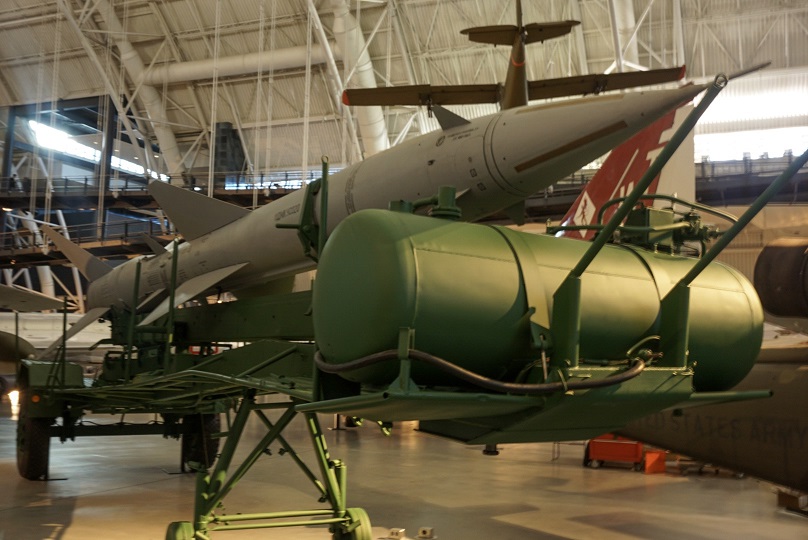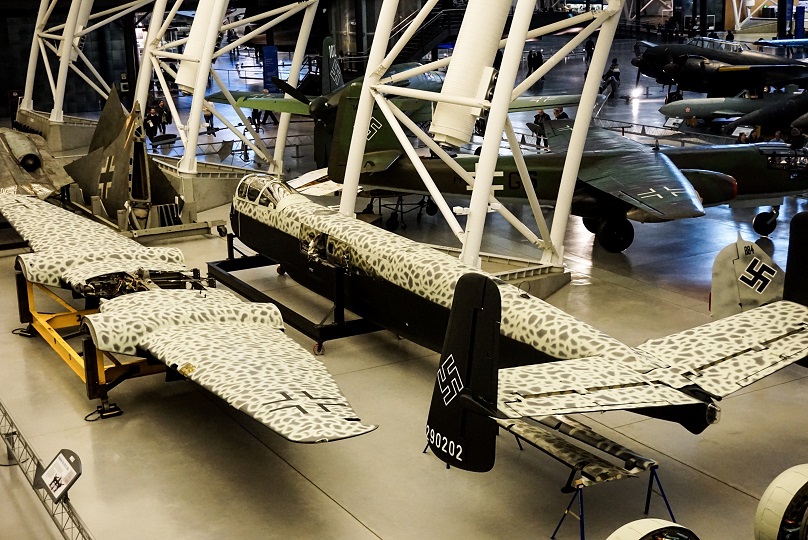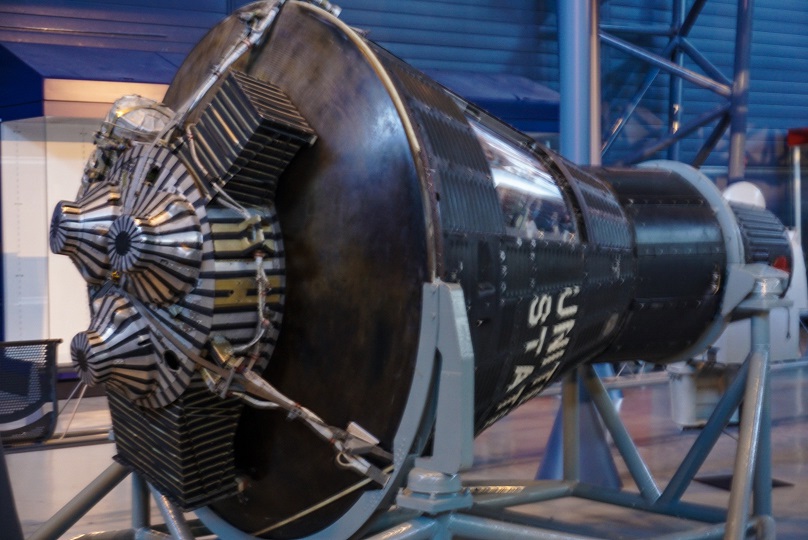Having lived in D.C. for so long now, I sometimes find myself wondering if there is anything I haven't done... and usually, I realize just how much I have taken for granted.
So when a kind gentleman asked me if he could plan an extended date for us to visit the Steven F. Udvar-Hazy Museum, I immediately perked up. The National Air and Space Museum in D.C. is one of my favorite museums in the area and Udvar-Hazy is it's annex located in Chantilly, VA. I'd heard many great things about the facility, which boasts two huge exhibition hangars with air and space artifacts from floor to ceiling - literally! There's also an additional hangar where projects are restored before being displayed in the museum, as well as the Donald D. Engen Observatory Tower that overlooks Dulles Airport, and an IMAX Theater (where we went to see Justice League - more on that in another post!)
Admission is free, but parking is $20. Also, the only food option at the museum is McDonald's, so we grabbed a bite to eat and had a picnic of sorts in the parking lot before entering.
If you're planning to visit, I would recommend setting about 4-5 hours to walk the museum. My date and I spent about 3 hours in the exhibition areas- starting with an abbreviated 90 minute tour facilitated by an awesome docent, and then spent the other 90 minutes browsing on our own. We still didn't see everything! We also paid a visit to the IMAX Theater to see Justice League (more on that in another post!) before heading back to Tyson's Corner for dinner at Wildfire (which was fantastic) and embarking on our own exploration of the final frontier...
The Aviation Hanger features everything from early 1920s aircraft to modern military jets, helicopters, and commercial aircraft. It's organized mostly my type and/or era.
I've tried to caption the photos with models, but some I did not get to note. Comment, tweet, or email me if you recognize something I've missed! I'll cross reference it with the museum's website and update the post.
1903 Wright Flyer Replica
We started our tour with this very detailed replica of the 1903 Wright Flyer, also known as the Kitty Hawk Flyer. The Wright Brothers completed the first successful flight of a powered heavier-than-air flying machine in a model that looked like this. On a modest budget, they accomplished what even government funded researchers were unable to do. It took immense dedication and countless hours of research, design and prototyping, and experimentation.
Sopwith F.1 Camel
Boeing 367-80
The Boeing 367-80, or Dash 80, was the first jet airliner.
Boeing initially had a bit of trouble selling this aircraft to airline industry executives, so they arranged for the esteemed Alvin "Tex" Johnston, a test pilot, to demonstrate it at Lake Washington in Seattle, Washington during the Gold Cup hydroplane races on August 7, 1955. Lots of airline industry representatives were expected to be in attendance. Unbeknownst to Boeing, Tex had a grand trick up his sleeve... he did a couple of barrel rolls right over the event to the amusement (and astonishment!) of spectators there.
Boeing B-29 Superfortress bomber
I was, of course, very giddy when we walked up to this beauty. World War II is one of my favorite eras in history (along with the Cold War) because of all the technological and scientific advancements that emerged from it.
(Fun fact: My initial interest in history and science emerged from a childhood hobby of mine, which was playing video games. My favorite was the Metal Gear Solid series. One of the characters I loved the most was a scientist by the name of Hal Emmerich. His grandfather was a researcher on the Manhattan Project. Obviously akin to one of my favorite scientists J. Robert Oppenheimer)
I actually had no idea that the Enola Gay was on display, so this was such a surprise. I think the story behind the development of the atomic bombs is so interesting, although I also find the end result very unnecessarily devastating and wish/wonder about the other ways the U.S. could have achieved a decisive and timely WWII victory. Our tour guide did an excellent job of retelling the stories of Little Boy and Fat Man:
The Japanese targets were chosen very strategically for the detonation of the super secret atomic weapons. Since only the Emperor of Japan could surrender the war for the Japanese people, Tokyo was out of the question. Hiroshima and Kokura were decided as the primary targets; Hiroshima was selected due to its size, geographic features, and importance as an industrial center, while Kokura was considered ideal because it was the site of the largest munitions plants in Japan.
Little Boy was loaded into the the Enola Gay, a Boeing B-29 Superfortress. The plane is named after Colonel Paul Tibbets Jr.'s mother, who supported her son in giving up his career in medicine to become a military pilot. In the wee hours of the morning on August 6, 1945, the bombardment squadron set out. At 8:15am, they released the bomb. Though it was slightly off target and inefficient, it completely devastated the city.
Days later, Fat Man was loaded into another B-29 Superfortress (Bockscar, which is on display at the National Museum of the United States Air Force in Dayton, Ohio) and the bombardment squad set out on the morning of August 9 for Kokura. Upon arrival, Kokura was shrouded in clouds and smoke from a nearby bombing. The crew had strict instructions to only drop the weapon over a clear visual target. They flew over Kokura three times before making their way to Nagasaki, the alternative target. But flying into Nagasaki, they discovered clouds there, too. The squadron was ready to implement a radar approach for the weapon, until the clouds opened and the bomb was dropped. It missed the intended target by 2 miles. But again, it devastated the city.
Arado AR 234 B Blitz (Lightning)
Curtiss P-40E Lope's Hope
Mikoyan-Gurevich MiG-15 (Ji-2) FAGOT B
Lockheed T-33A-5-LO Shooting Star
Lockheed Martin X-35B STOVL
Curtiss SB2C-5 Helldiver
Sikorsky JRS-1
Boeing-Vertrol CH-46E Sea Knight "Phrog"
All of the military helicopters reminded me of video games like Metal Gear Solid or Gears of War. LOL!
SA-2 Guideline Missile
Lockheed SR-71 Blackbird
This aircraft got lots of attention from everyone who walked by it and elicited the most questions of all from our tour group. It definitely commands the attention of the room with its sleek appearance, which looks like something straight out of a movie.
The Lockheed SR-71 Blackbird was developed for the U.S. Air Force's recon purposes. It is one of several aircraft in the museum that bear the skunk logo, indicating affiliation with the elite (and very clandestine) Skunk Works division of Lockheed Aircraft Manufacturing Company. Special stealth materials allowed the plane to fly at Mach 3+ and remain fairly undetected.
The view from the observation deck - you can see planes flying in and out of Dulles International Airport (IAD) while listening to the air traffic controllers.
Heinkel He 219 A Uhu
Junkers Ju52
Looking into the Mary Baker Engen Restoration Hangar
Then we headed to my favorite place... outer space! I am always amazed by space technology.
Saturn V Instrument unit
Space Shuttle Discovery
NASA was kind enough to gift the Discovery orbiter to the Smithsonian for display at Udvar-Hazy. Lucky, lucky! Of all the orbiters from the Space Shuttle program, Discovery gathered the most spaceflights. It was used to do research and assembly at the International Space Station, carried the Hubble Space Telescope into orbit, sent out three TDRS satellites, and deployed the Ulysses space probe.
One of the most interesting things I learned about these orbiters- the space occupied by the astronauts is rather small compared to the vehicle. The crew cabins are towards the front of the aircraft (duh) with three cabins - the flight deck, mid-deck, and utility area. The majority of the rest of the space craft is dedicated to cargo!
I have never seen a space orbiter up close and personal, so I've long assumed it's made of some sort of metal on the outside and inside. During my tour in Chicago I had the pleasure of a date to the Museum of Science and Industry. My date and I discussed spacecraft construction while looking at some of the models they have there, and he was the first person to inform me of that I was somewhat misinformed! The orbiter's entire surface is actually made of many different materials to protect it from extremely high heat (and also withstand the cold of space while in orbit). The tiles on the belly of the aircraft are High-temperature reusable surface insulation (HRSI) tiles that are made of coated LI-900 Silica ceramics. These tiles are ultra-lightweight and must be handled delicately- so ironic, considering their purpose and durability!
The structure that is often seen launching into space includes the orbiter, two rocket boosters, and an external tank with liquid hydrogen and liquid oxygen. On the orbiter, the U.S. flag is backwards. This is because the U.S. flag regulation for display on a national vehicle dictates that the stars must be positioned at the front, to look as though the flag is "flying" along the side of the ship.
Where are the other space shuttle orbiters? Of the six built, only four remain. Atlantis, the last shuttle to complete a space mission, is at the Kennedy Space Center Visitor Complex in Orlando, FL. The last shuttle to be built, Endeavour, is at the California Science Center in Los Angeles, CA. Enterprise is at the Intrepid Sea, Air and Space Museum in New York City, NY. The Enterprise space shuttle did not have the systems necessary for spaceflight, so it was only used for testing purposes. (Date ideas! I'd love to see them all.)
Mercury Capsule 15B, Freedom 7 II
Tracking and Data Relay (TDRS) Satellite
Satellites!
If you're an aviation and space enthusiast, I wholeheartedly recommend a visit to both the the Smithsonian Air and Space Museum facilities in D.C. and in Chantilly, VA. Two very different experiences, but both very fulfilling. My dad was a jet engine mechanic for the Navy and served in the Europe and the Persian Gulf before retiring from the military - he was so excited by some of the photos I sent. I love WWII technology and have long been fascinated by space engineering- plenty of items to satisfy both of those interests are featured at Udvar-Hazy as well.












































